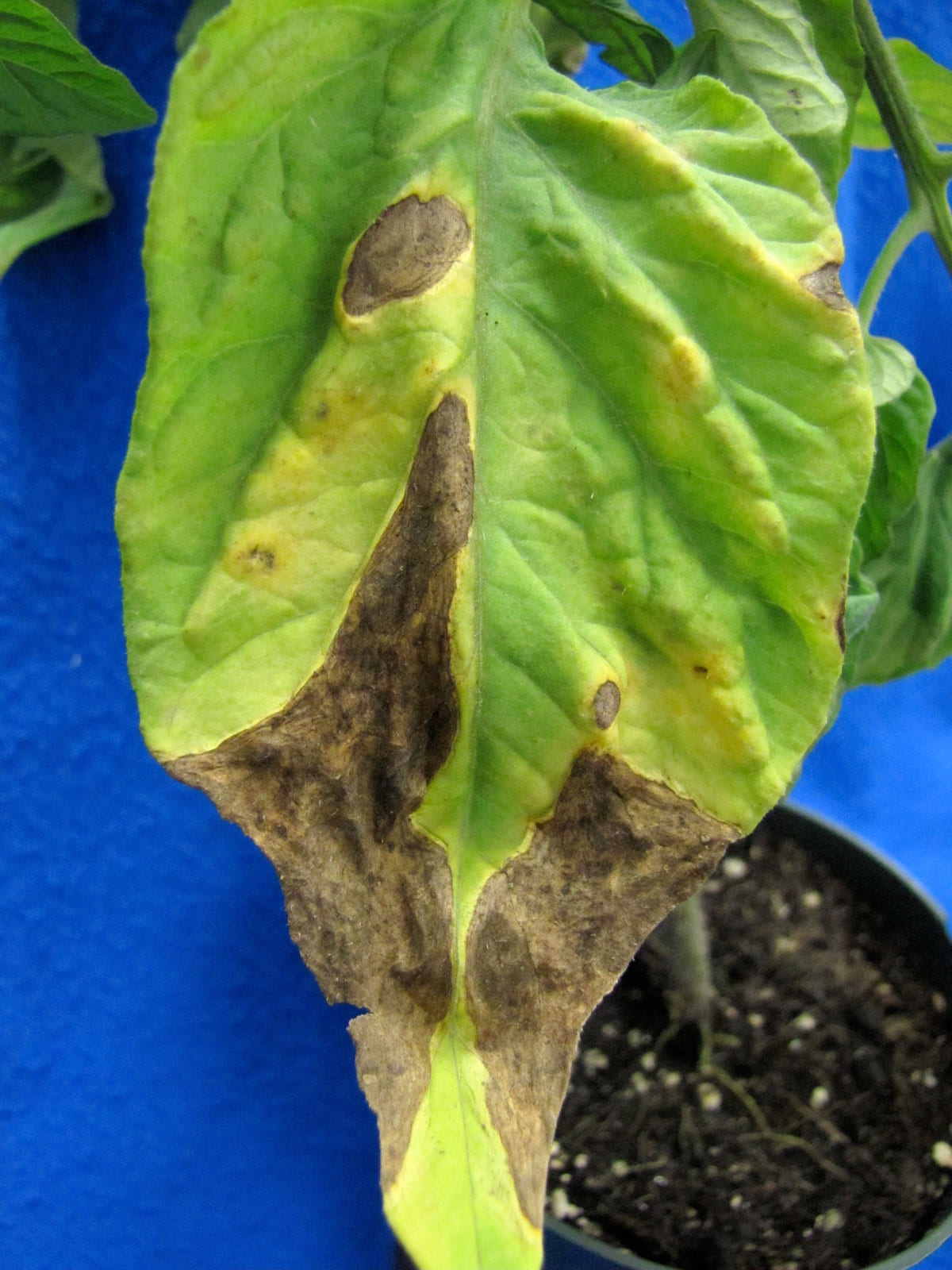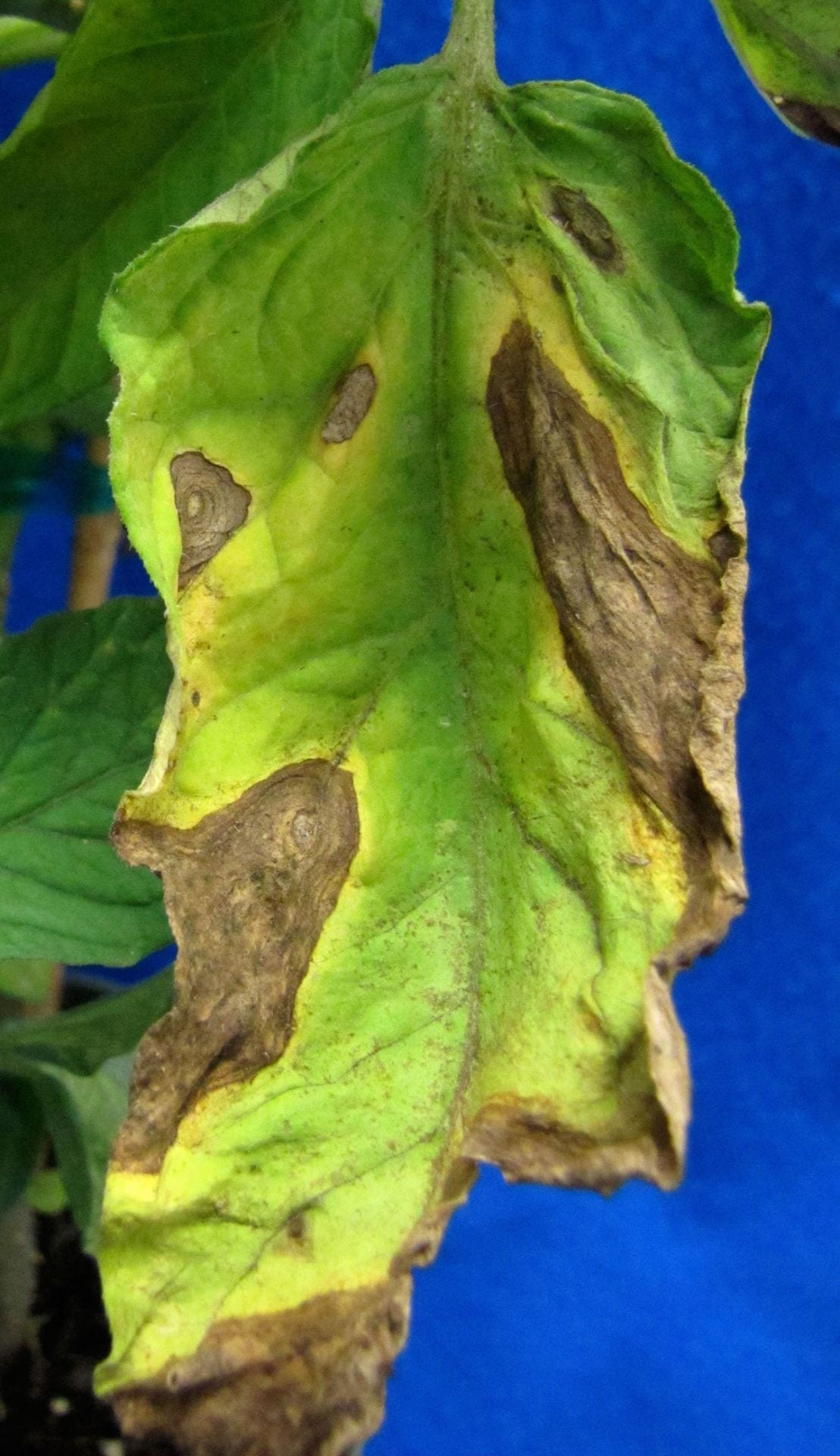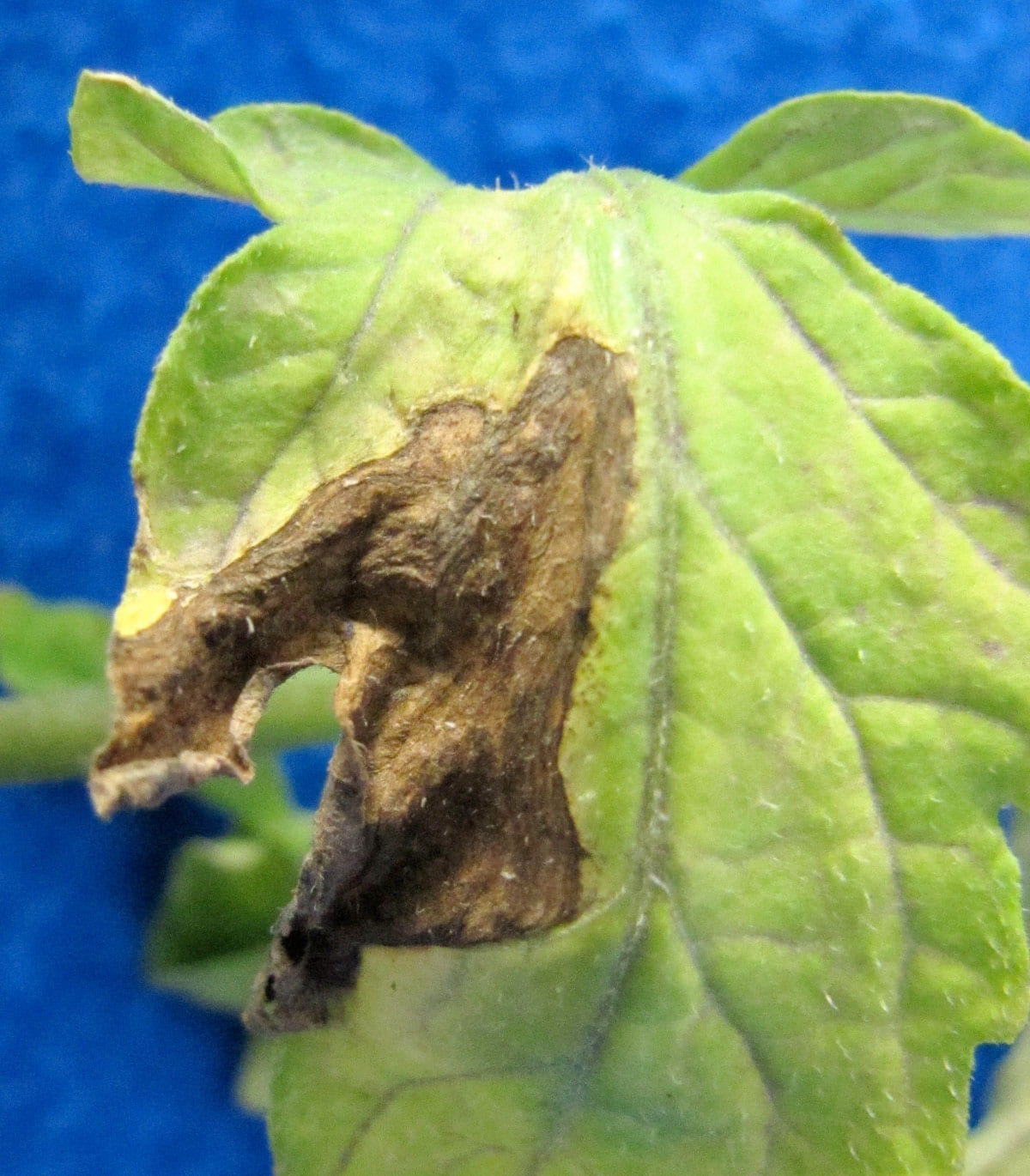When plants are unable to supply their leaves with enough water, the resulting stress can lead to death of leaf tissue, often in sections extending from the leaf edge. This is sometimes mistaken for late blight.
Plants are most prone to this stress when transpirational demand is high, which includes hot, windy weather and periods of rapid growth. It can be challenging under these conditions to avoid times when soil is neither too dry or too wet. Another factor is high humidity because it reduces transpirational water movement. Large plants in small pots are especially difficult to maintain with adequate soil moisture.
Most of the images on this page are of samples submitted to a diagnostic laboratory because of their resemblance to late blight. This physiological injury can be distinguished from late blight by the lack of light green, wilted border tissue around leaf symptoms, lack of pathogen growth, and lack of stem lesions. See late blight photos for comparison.
See also Blossom end rot.






